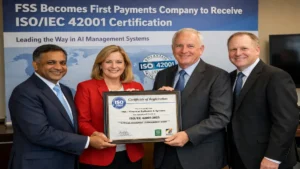ATM operators in India are advocating for an increase in interchange fees by Rs 2 per transaction, citing financial sustainability challenges. The Confederation of ATM Industry (CATMI) has formally approached the Reserve Bank of India (RBI) and the National Payments Corporation of India (NPCI) to raise the current maximum fee from Rs 21 to Rs 23 per transaction, as reported by the Economic Times.
Background and Current Situation
Currently, savings account holders are entitled to five free transactions per month at their bank’s ATMs in metro cities, with three free transactions allowed at other bank ATMs. The last fee hike, from Rs 15 to Rs 17, occurred in 2021, setting the upper limit at Rs 21 per transaction. According to CATMI, increasing the fee ceiling to Rs 23 will bolster the financial health of ATM businesses.
RBI’s Position and Industry Response
Reports suggest that the RBI is inclined to support the proposed fee hike, recognizing the financial strain on ATM operators. Industry stakeholders, including ATM manufacturers and banking institutions, have reportedly aligned with the need for a fee adjustment, anticipating a positive regulatory response in the near term.
Future Implications and Stakeholder Perspectives
Stakeholders like AGS Transact Technologies highlight the urgency for this adjustment, pointing out that previous hikes took considerable time to implement. With widespread lobbying efforts and industry consensus, stakeholders anticipate a favorable outcome to address operational viability concerns.
ATMs: Key Points
Invention
- ATMs (Automated Teller Machines) were invented in the late 1960s.
- The first ATM was installed by Barclays Bank in London in 1967.
How ATMs Work
- ATMs allow users to perform basic banking transactions without the need for a bank teller.
- They operate 24/7, providing access to cash withdrawals, deposits, balance inquiries, and other services.
Usage
- ATMs are widely used globally for convenient access to cash and banking services.
- They are located in banks, retail stores, airports, and other public locations.
Evolution
- Modern ATMs have evolved to offer advanced functionalities such as bill payments, mobile top-ups, and check deposits.
- Many ATMs are equipped with touchscreen interfaces and multilingual options for user convenience.
Security
- ATMs use various security features like PIN codes, encryption, and surveillance cameras to protect user transactions.
- Skimming and other fraudulent activities remain concerns, prompting ongoing security enhancements.
Impact
- ATMs have revolutionized banking by expanding access to financial services, especially in remote and underserved areas.
- They reduce the dependency on physical bank branches for routine transactions.
Future Trends
- The future of ATMs may involve integration with digital wallets, biometric authentication, and enhanced connectivity.
- Innovations aim to make ATMs more user-friendly, secure, and capable of handling diverse financial transactions.




 Akasa Air Enters IATA, Becomes India’s F...
Akasa Air Enters IATA, Becomes India’s F...
 FSS Becomes First Payments Company to Re...
FSS Becomes First Payments Company to Re...
 Google Now Lets Users Change Primary Gma...
Google Now Lets Users Change Primary Gma...







